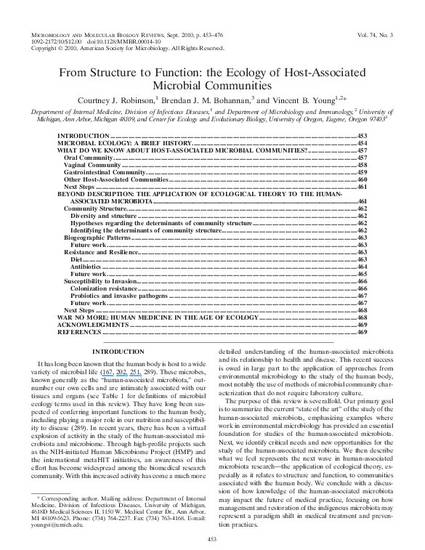
Article
From structure to function: the ecology of host-associated microbial communities
Microbiology and molecular biology reviews: MMBR
(2010)
Abstract
In the past several years, we have witnessed an increased interest in understanding the structure and function of the indigenous microbiota that inhabits the human body. It is hoped that this will yield novel insight into the role of these complex microbial communities in human health and disease. What is less appreciated is that this recent activity owes a great deal to the pioneering efforts of microbial ecologists who have been studying communities in non-host-associated environments. Interactions between environmental microbiologists and human microbiota researchers have already contributed to advances in our understanding of the human microbiome. We review the work that has led to these recent advances and illustrate some of the possible future directions for continued collaboration between these groups of researchers. We discuss how the application of ecological theory to the human-associated microbiota can lead us past descriptions of community structure and toward an understanding of the functions of the human microbiota. Such an approach may lead to a shift in the prevention and treatment of human diseases that involves conservation or restoration of the normal community structure and function of the host-associated microbiota.
Disciplines
- Biology and
- Microbiology
Publication Date
August, 2010
DOI
10.1128/MMBR.00014-10
Citation Information
Courtney Jaime Robinson, Brendan J M Bohannan and Vincent Bensan Young. "From structure to function: the ecology of host-associated microbial communities" Microbiology and molecular biology reviews: MMBR Vol. 74 Iss. 3 (2010) p. 453 - 476 Available at: http://works.bepress.com/courtney-robinson/5/
